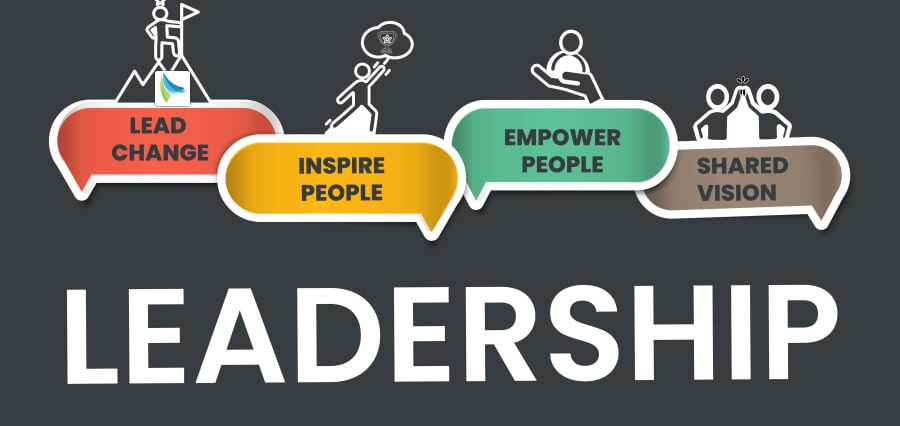From Vision to Victory
In a fast-paced corporate environment, an entrepreneur needs more than a well-run business to become a legacy leader in a company that impacts future generations through the advantages of a well-planned vision, a strong culture, effective relationships with stakeholders, and leadership agility.
The Power of Strategic Business Influence
The art of business influence is essentially the art of determining what an organization will be, architecting the necessary alignments to achieve it, and executing the long-term strategy and plan. The ways through which leaders infuse their influence in the culture, operations, and partnerships that sustain after their departure are how they make it.
It all starts with powerful strategic insight, a clear, long-term roadmap consistent with mission and values, and enabled by activities like SWOT analyses, responsiveness to change, and scenario-based foresight.
Visionary Leadership as a Catalyst for Legacy
Great visionaries combine seeing the big picture and conveying values effectively. They instill trust by encouraging uniformity of message and strict adherence to execution. Patagonia, for example, has based its business on environmental conscience: its founder, Yvon Chouinard, has instilled environmental responsibility into all business functions, including sustainable suppliers and its recycling initiative, Worn Wear, thereby transforming a sense of belonging into legacy and business impact. Starbucks with Howard Schultz similarly focused on community and employee well-being in addition to expansion- a brand story that transcended its coffee cups.
Culture, Influence & Organizational Alignment
The core of a legacy leader depends on a permeable internal culture that transforms strategic business influence into daily actions. It has been repeatedly demonstrated that performance-driven cultures have been observed to encourage innovation and long-term prosperity. The 7S framework of McKinsey shows that there should be a focus on aligning strategy, structure, systems, skills, style, staff, and shared values, making sure that the decision made supports the overall purpose and does not weaken it.
Ambidextrous leadership is important in helping legacy organizations explore and exploit opportunities. Flexible movement between exploration-driven (transformational) and efficiency-driven (transactional) leadership styles by CEOs maintains innovation and protects operational integrity.
Strategic Partnerships & Stakeholder Influence
Real business power is not limited to the enterprise. Capacity, reputation, and impact may be strengthened through strategic partnerships with NGOs, academic institutions, or industry allies. Partnerships allow businesses to enter new markets, exchange resources, and develop their ecosystems around their mission. Meanwhile, legacy relies on stakeholder management ranging from employees, investors, and the communities. Leaders who set out to welcome feedback, practice openness, and inspire faith through moral governance create resilience and enduring power.
Ethics, CSR & Purpose-Driven Strategy
The legacy building in the current era cannot be independent of the social and environmental impacts of a firm. CSR initiatives have become not only a philanthropic act but also a principal strategy that enhances credibility and sustainable brand strength. This is depicted by Indra Nooyi of PepsiCo through Performance with Purpose, the integration of health, sustainability, and social agendas into business strategies.
Talent Development & Succession Planning
A powerful tradition requires its posterity. Succession planning keeps leadership changes within the context of maintaining influence rather than destroying it. Effective programs help determine emerging talent, institutionalize organizational knowledge, and shape future leaders in line with the strategic vision. Firms unable to plan (particularly SMEs) may derail their long-term course.
Innovation & Adaptive Strategy
Legacy leaders are not vestiges of the past; they are future-proof. Adopting change adaptive structures, like continuous improvement, feedback loop, reinvestment in research and development, and scenario planning, becomes resilient. Companies such as IBM, Disney, or GE repeated the failure when they fell under the so-called short-term pressure to fall under the long-term influence (see the need to balance the investor demands and reinvestment in innovation).
Measuring Influence & Growth
The long-term impact cannot be left to chance. To measure cultural fit, brand perception, stakeholder confidence, and innovation adoption, legacy-driven leaders use indicators and governance models of progress. Annual audits, reprioritization discussions, and flexibility practices can also contribute to maintaining strategic influence intentionally rather than adrift.
Case in Point: Toyota and Akio Toyoda
Renowned automaker, Akio Toyoda, had led Toyota to survive through crises (recalls and world shocks), through engineering innovation and strategic thinking. His management style was all about strategic business influence: technical legitimacy (as the automotive alter ego Morizo) mixed with organization change heralding projects such as Woven by Toyota. He influenced Toyota to have a global name and strength, even with the changes in governance.
Conclusion
A strategic business influence on vision to victory is not about overnight success; it is about arranging a legacy through mindful decisions, alignment of stakeholders, culture creation, ethical intent, and future adaptability. The example of legacy leaders Patagonia, Starbucks, Toyota, and PepsiCo shows that a vision founded on values, told well, supported by culture, and implemented with strategic power can withstand the test of time.
Read Also: Executive Leadership Trends Inspired by a Visionary Executive












